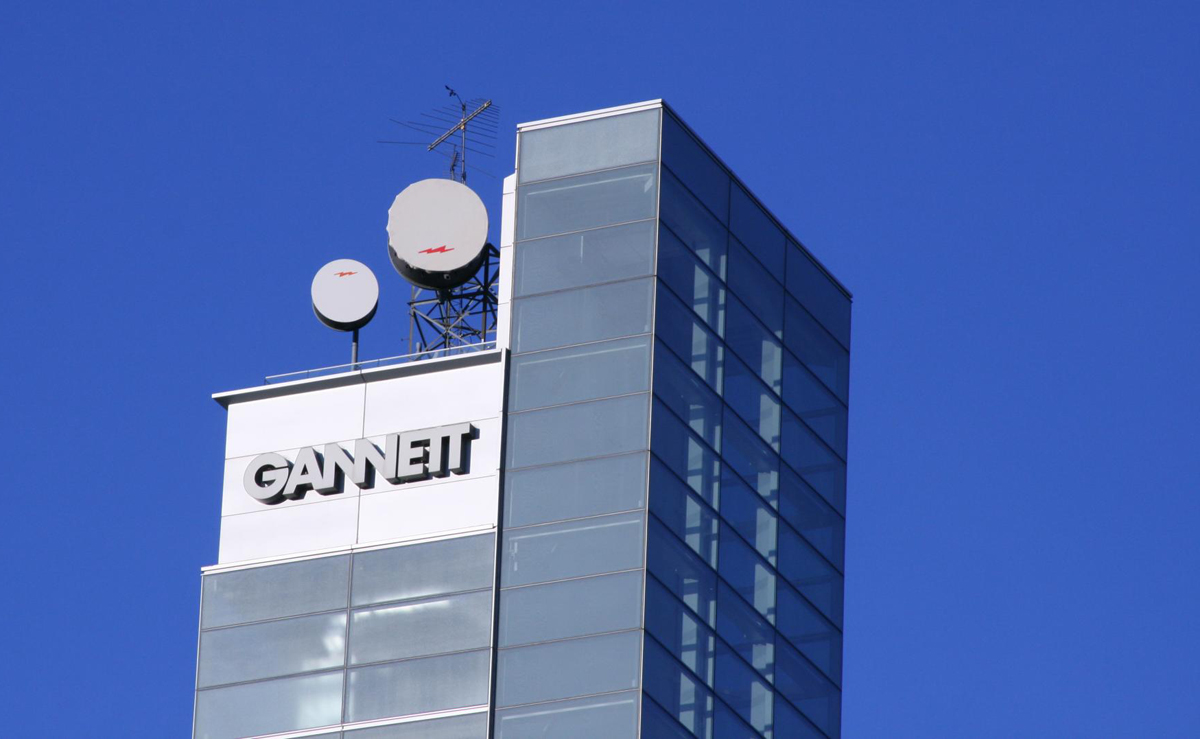Gannett’s expansion goal is to be the number one news network in the country as measured by ComScore metrics, CEO Bob Dickey told analysts in an earnings conference call Wednesday.
The company can achieve that with a presence in 125 to 140 markets, he added. It won’t take 200. Gannett already has the largest newspaper related sites and trails Time Inc., Turner Digital (the owner of CNN), Comcast NBC Universal and CBS Interactive, according to ComScore.
If Gannett is successful in its bid for Tribune Publishing and its 11 major dailies, that will move holdings close to the low end of the range (with 107 regional papers in hand already).
Dickey also spoke of Gannett’s recent minority investment in Jim Brady’s Spirited Media whose initial venture is the Billy Penn site in Philadelphia. The goal, he explained, is to help Spirited to create similar sites in a number of other markets.
My hunch is that the markets picked, like Philadelphia, will mainly be ones where Gannett does not have a newspaper presence (Pittsburgh may well be next).
If the Spirited buildout reaches a half-dozen additional cities and those are somehow integrated into Gannett’s USA TODAY Network, its market coverage would be in the low 120s.
Dickey spoke only briefly about the Tribune Publishing bid and said he would not take questions on details like timing and negotiation strategy.
He did say that the company’s balance sheet and borrowing capacity is strong enough to cover the cost of that acquisition and more later.
I and other analysts have wondered whether Gannett might sell the Los Angeles Times a local ownership group if the Tribune deal goes through, recouping some of the $815 million bid.
But Dickey reiterated in an interview with my colleague Benjamin Mullin, published earlier today, that the plan would be to keep the Los Angeles Times both as a regional anchor in California and a source of expert national and international reporting.
The occasion for the call was Gannett’s report on first quarter earnings — a mixed bag with revenues and net profit both down compared to the same period a year ago.
But some of that was attributable to accounting factors and foreign currency adjustments from Gannett’s newspaper group in Great Britain, Dickey said. On an EBITDA (earnings before interest, taxes, depreciation and amortization) basis, often viewed as the better measure of operating performance, the company did 9.1 percent better than in the 2015 quarter.
Still, sharing in the industry’s advertising woes, Gannett was down more than 8 percent year-to-year. And its circulation revenue was off as well, suggesting print losses outweigh some gains in paid digital subscriptions.
The bottom line was $31.3 million in net earnings on revenues of $659.3 million — a profit margin of almost exactly 5 percent.
Wall Street reacted favorably to the report, as it did earlier in the week when the bid for Tribune Publishing was revealed. Shares were trading up 7 percent in mid-afternoon trading.
In fact, Gannett’s stock performance has been noteworthy since it was spun off from the company’s television and digital businesses last June. From an initial offering price of $15, it has climbed to $17.50, while TV counterpart TEGNA has declined slightly.
That’s well better than the industry norm and a particular contrast to Tribune Publishing. Those shares had lost about 70 percent from an initial offering at $25 a share in a similar spinoff before rallying this week on the strength of the Gannett’s premium bid for the company.
Tribune Publishing’s first quarter results are due May 4. Executive chairman Michael Ferro has promised then to reveal details of his team’s strategic vision for turning the company around.
Unusual for these kinds of calls, Dickey spent substantial time in his prepared remarks talking about journalism quality and prizes won by USA TODAY network papers and the newly added Journal Media Group. Several of Dickey’s interviews and letters related to the Tribune Publishing emphasize that journalism excellence is part of the point of the proposed acquisition.







